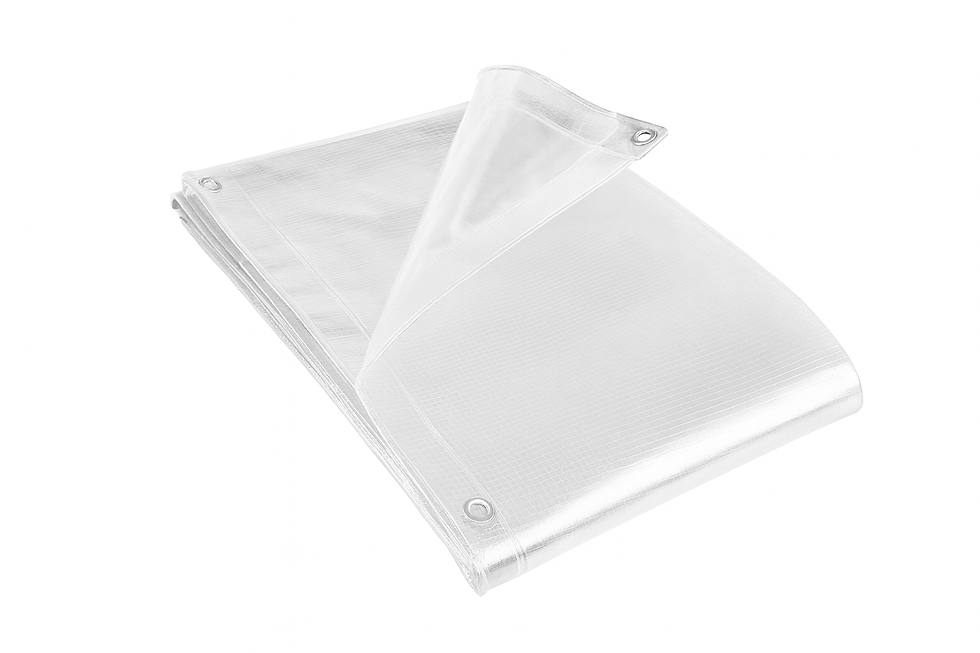Tarpaulin: A Versatile Material for Home Projects
- UK Tarps
- Sep 11, 2024
- 3 min read
Tarpaulins or tarps are very versatile materials that can be used in various home improvement projects. They vary in size and material, which makes them versatile in use. Tarpaulin sheets are versatile structures that may be used indoors and outdoors in the home due to the following benefits:
What is a Tarpaulin?
A tarpaulin is a large piece of tough, flexible, water-repellent cloth. There are varieties of tarps depending on the material that is used to develop them and some of the most common materials include vinyl, canvas, and polyethylene. These materials do not easily get torn and are rather durable when used outside. Materials used in making a tarp are waterproof and this make it to prevent moisture from penetrating through it. They are available in various sizes, colors, and thicknesses depending on their intended application.
Why Use a Tarp?
There are many reasons to use a tarp around your home:
Prolongs the life of surfaces and items by shielding them from harsh weather conditions.
Provides temporary accommodation and protection from the scorching sun.
Uses tarpaulin or any waterproof material to cover firewood to prevent it from getting wet.
Waterproof membrane under deck boxes or compost bin
Unfurls to protect furniture on a patio or cars and other automobiles.
Can be fastened with ropes, straps, weights, or stakes easily
It can be folded when not in use and occupies very little space.
Tarps for Outdoors
Several types of tarps work well for outdoor home projects:
Thermoplastic Tarps – These are made of polyethylene plastic, and they are very durable and cannot be easily punctured, develop mildew, or torn. Polytarps are the cheapest and are also waterproof.
Canvas Tarps – This type of tarp is made of thick woven cotton canvas that has breathability such that it lets in some water. Canvas tarps can be durable for many years if well-treated and stored properly.
Mesh Tarps – These are made of fabric with a mesh-like texture, which gives shade while allowing air to pass through. Mesh tarps are usually laid over decks, patios, and above garden beds.
Silver Tarps – These are coated with a reflective silver polyurethane film which can reflect more than 80% of radiant heat. Silver tarps can reduce temperatures beneath patios, decks, and greenhouses.
You Find a Tarp Is Useful In Many Aspects Of Your Home
There are endless ways to utilize Clear Tarpaulin around your home and property:
Firewood Storage – When firewood is cut and stacked, protect it from moisture by using a waterproof tarp. Ensure adequate ventilation to avoid the formation of molds.
Out-of-Home Shelters – These include buildings by erecting a canopy using trees, posts, or a rope line and covering them with tars. This provides a shaded area for the social congregation, storage, or children's play den.
Landscaping – For controlling weeds, warming of soil, or frost protection during gardening in the garden. On pathways, tarps directly reduce the formation of mud and grass in between rows of gardens.
Painting Projects - In painting projects, tarps are laid on the floor and on furniture to prevent paint from dripping or spilling on the floor or furniture. Cleaning is also very fast and all that is needed is to fold and dispose.
Temporary Roof Patch - Employ a tarp and roofing cement to give a quick fix to a hole or leakage in the roof if you cannot fix it on a longer-term basis. Put another weight over it like cinder blocks.
Protecting Items – Cars, patio furniture, grills, supplies, and materials can be protected through the use of a tarp to prevent them from getting wet. Retractable or rope should be used to accomplish the tying down process.
Tips for Using Tarps
Follow these basic guidelines when using tarps:
Choose a long-lasting tarp that is thicker than 6 ml and do not compromise on its quality
Ventilate the soils, wood, or structures that may be covered with tarpaulins
Instead of using conventional straps, opt for grommeted tarps that can be secured using rope or bungee cords.
Visually inspect tarps for signs of wear, rip, or signs of loosening
In the case of small holes, they should be repaired using waterproof adhesive tape.
Clean the tarps after use with mild soap and water depending on the type of work done on them.
Store tarps neatly and compactly, especially after the completion of projects.
Conclusion
Tarpaulins are practical, multifunctional, and cheap materials for most home improvement or even repair tasks. Their durability, tear-resistance, and waterproof barriers shield surfaces and contain spills. Tarps can be purchased in various sizes and types, which will depend on the purpose it will be used for. If proper care is taken, tarping will provide service for many years around the house.




Comments